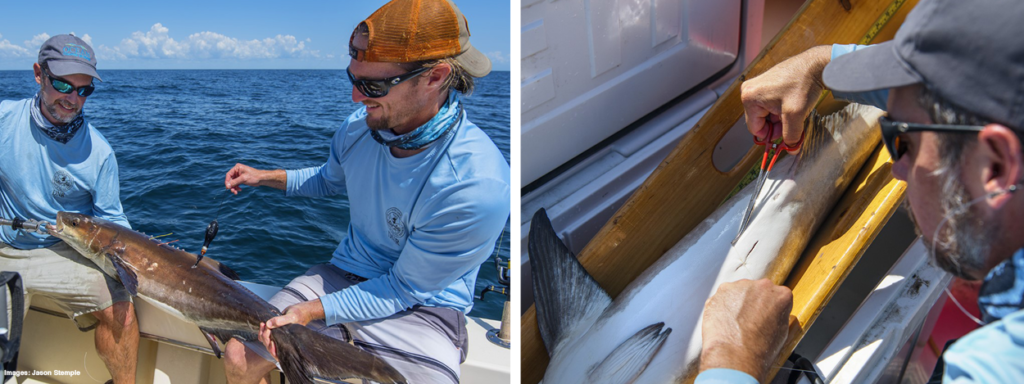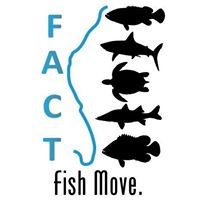
Project Overview
Cobia are a popular saltwater recreational fish in the southeast U.S. and are managed as two stocks; the Gulf of Mexico and South Atlantic migratory groups. State and federal resource managers need detailed information on the biological boundary of the two cobia stocks, how they interact with one another, and their habitats to properly allocate catch among multiple user groups. To answer these questions, fisheries biologists from South Carolina, Georgia, and Florida, surgically implanted 143 acoustic transmitters in cobia and tracked the fish using the FACT acoustic receiver arrays.
Why this Matters
This project helps fisheries biologists and resource managers better understand how much movement occurs between the two stocks and the geographic boundary where they separate. The movement data will support regulations to maintain healthy stocks of cobia from South Carolina to Florida for generations to come. Tracking is also revealing the migratory patterns and temperature and depth preferences of cobia, a species whose behavior has historically been poorly understood.
Lead Organizations
- South Carolina Department of Natural Resources
- Florida Fish and Wildlife Conservation Commission
- Kennedy Space Center Ecological Monitoring
Partners
- Contributing members of the ACT, FACT, and iTAG networks, SECOORA, and numerous local fishing clubs.
Supported by
- NOAA Fisheries Cooperative Research Program Grant # NA15NMF4540105
- U.S. Fish and Wildlife Service, Federal Aid in Sportfish Restoration Projects
Project Status
- Ongoing
Contact
Resources & Publications
- South Carolina Department of Natural Resources Receiver Study
- Florida Fish and Wildlife Conservation Commission Using Acoustic Telemetry to Track Cobia Movement Patterns
FACT Tag Codes
COBCRP
FACT Array Codes
